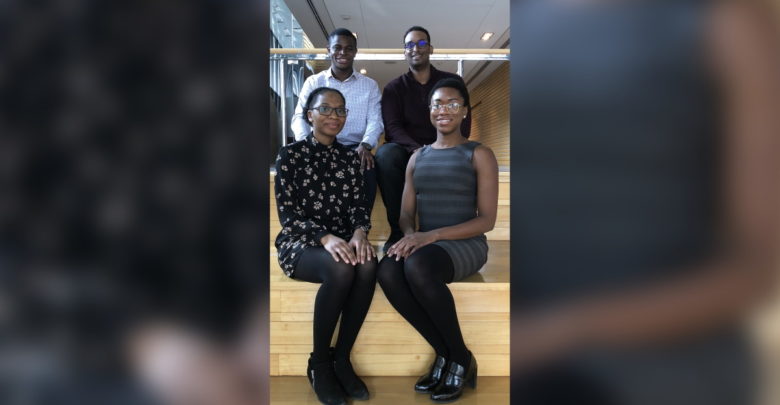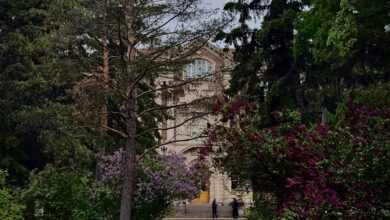U of A medical school admissions program aims to address racial bias against Black applicants
The U of A's medical school passed an admissions process that aims to address racial inequality in medical school
 Supplied
SuppliedAspiring Black medical students will be encountering a new application process attempting to make medical school admissions less racially biased against Black applicants.
The University of Alberta has instituted a new medical school admissions process — the Black Applicants Admissions Process (BAAP) — to combat the inadequate representation of Black ethnic groups in the program. The idea for the BAAP was brought forth to the Faculty of Medicine by the University of Alberta Black Medical Students’ Association (BMSA) and implemented in June 2020.
Students who self-identify as Black may now make this known on their application to the doctor of medicine (MD) program. This will ensure their file is viewed by at least one Black representative and, if the applicant receives an interview offer, that a Black, Indigenous and people of colour (BIPOC) representative will be on the panel for the interview. The admissions committee will also include a BMSA student representative and a Black guest representative from the community.
Ruth Legese, a first-year medical student at the U of A and vice-president (social and marketing) for the BMSA, recounted some of her experiences applying to medical school.
“I think one thing that was different [from my experience compared to other applicants] is that I had quite a few Black physician mentors who recommended I do my best to not identify myself as Black in my application,” Legese said. “That was due to what they had experienced.”
These experiences are not unique to her. Legese said surveys of other Black applicants revealed a fear of judgment when discussing their lived experiences, augmented by the lack of Black interviewers.
Legese pointed to a shortage of Black medical professionals, something visible within the U of A MD admissions numbers.
“Right now in the MD program in Alberta, Black students make up 1.2 per cent of the student body,” Legese described. “That’s compared to the 6 per cent of Black Canadians in Edmonton so it’s not representative at all. Black Canadians … [make-up] 3.3 per cent [of the population of Canada]. Black Albertans are 3.5 per cent. We don’t meet any of those thresholds.”
The disparity illustrated by these numbers was part of the reason the BMSA brought their concerns to the faculty of medicine and dentistry. Dr. Sita Gourishankar, dean of admissions to the MD program, was approached by the group and was eager to help.
“When [the BMSA] brought [the concern] forward, I essentially took action within 24 hours, presented it to our admissions committee, and we established the Black Applicants Admissions Process,” Dr. Gourishankar recounted.
The U of A is not the first school to implement this process. The University of Toronto started something similar over three years ago. The year before in 2016, they only had one Black student in a class of over 250. As a comparison, the Greater Toronto Area has a Black population of 10 per cent. Now, there are 24 Black students, meeting that 10 percent population proportion. The University of Calgary has also proposed such a process.
With this year being the first cycle that the BAAP will be utilized, the BMSA anticipates that there will be areas of improvement.
“We’re still playing around with what should be included and what shouldn’t, so this is like our pilot,” Legese said.
The faculty of medicine and dentistry wanted to make clear the application process aims to make sure students are evaluated on their merits, not their skin colour.
“I think it is incredibly important to know that these students are meeting the same requirements, they are certainly striving and achieving the ranking our other students are,” Dr. Gourishankar said.
“I think the narrative that we are trying to use is that we are certainly trying to remove disadvantage as opposed to giving advantage.”
Dr. Gourishankar
The BAAP’s push to create a Black applicants cycle fits into an overarching goal that the faculty of medicine and dentistry is trying to achieve — a goal of removing biases.
“In the last four years we have taken a significant review of the admissions process and implemented many initiatives to try to remove any unconscious or conscious bias that may exist as well to increase the cultural sensitivity over all of our admissions process,” Dr. Gourishankar explained.
At the end of the day, the common belief shared by the faculty and the BMSA is that what makes a suitable medical student is not the colour of their skin, but rather other qualities they bring forth.
“We’re making sure that when we are assessing medical school applicants, MD prospects, we’re only looking at their qualities and their experiences and not any other factor,” Legese said.



